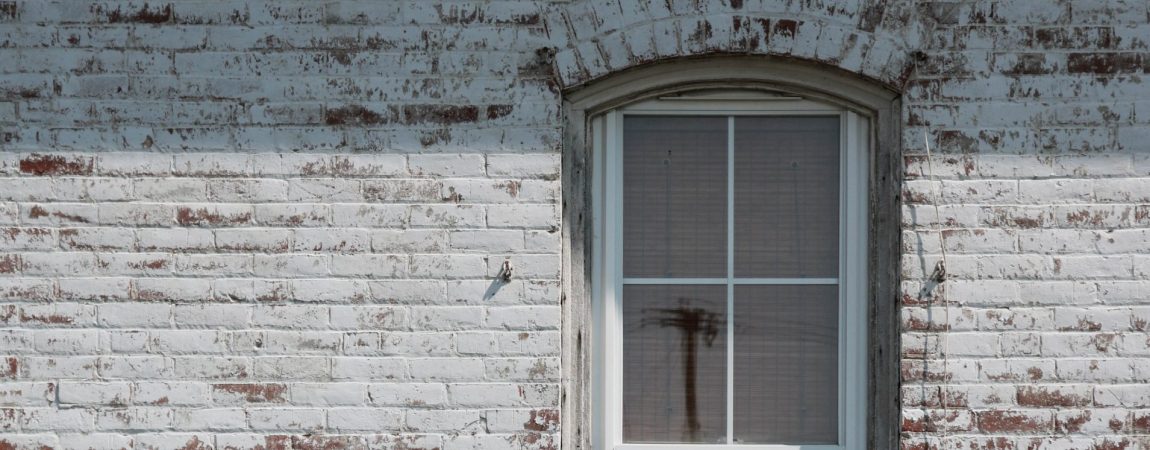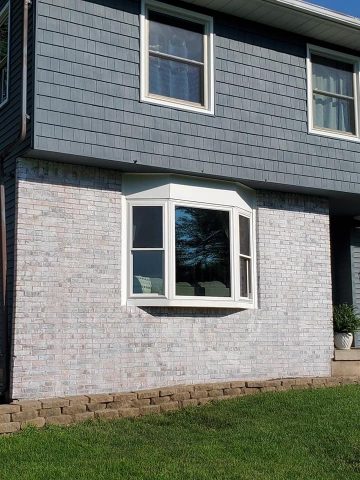
Limewash vs Whitewash Brick: What’s the Difference?
Posted on April 25, 2022
The benefits of owning a brick home are plentiful. They’re naturally fire and weather-resistant, composed of natural, renewable resources (shale and clay), easy to maintain and naturally insulated.
However, your choice in brick colors can feel limited, and homebuyers sometimes feel like they’re compromising on their desired home color. Luckily, there are eco-friendly, cost-effective options to give your brick home a facelift without agonizing over the details that come with painted brick. Limewashing and whitewashing are both historical processes that have recently risen in popularity as alternatives to more expensive exterior upgrades.
In this article, we’ll discuss limewash vs. whitewash for brick homes and the benefits to each.
What is Limewash?

Limewash was at the height of its popularity in the 1800s and 1900s because it was readily available and economical.
Limewash consists of two ingredients: lime and water, and is usually a white color, but other natural hues are typical. Lime, not to be confused with the citrus fruit, is extracted from limestone and then processed into lime putty or paste. Combined with water, the mixture turns into a matte or chalky texture that is then ready to be applied to a home’s exterior.
Unlike painted brick, limewash doesn’t simply sit on top of brick; it penetrates the fibers.
Pros of Limewashing Exterior Brick
- Low maintenance
- Bacteria-resistant
- Attractive aging process
- Inexpensive and eco-friendly
- Available in other natural colors and hues
Cons of Limewashing Exterior Brick
- Difficult to control the consistency of appearance
- Labor-intensive; needs many coats to be a solid color
- Won’t change the texture of your brick
- Comes in a limited range of earth tones and off-white
- Can’t be applied over painted brick
What is Whitewash?
Although limewash can be considered a type of whitewash and is often used synonymously, we’ll be differentiating the two for this article.
Whitewash is a half-and-half mixture of water and paint that sits on top of brick, unlike limewash, to provide a translucent finish, muting the brick’s natural color. Unlike painted bricks, whitewashing preserves bricks’ natural, random variations, depending on how much is applied and how each individual reacts to its application.
Pros of Whitewashing Exterior Brick
- Provides a smoother surface finish
- Low maintenance and lasts for years
- Can easily be applied to painted bricks
- Limitless color choices
- Provides full coverage
Cons of Whitewashing Exterior Brick
- More expensive than limewashing when used on larger surface areas
- Some paints can trap moisture
- Hard to remove if you change your mind
- Difficult to maintain consistency of mix if DIY
Which is Best for Your Home?
Now that you’re familiar with limewash vs. whitewash, how do you choose which process to use for your exterior brick?
Limewash is an excellent choice if you’re looking for something natural and eco-friendly. We recommend this technique for someone looking for a semi-permanent change that can be removed with power-washing. Limewash brick is a great choice for a vintage home look on new bricks.
On the other hand, whitewashing bricks is recommended for those searching for a solution that is more permanent. Because whitewashing is mixed with paint, it can be used on previously painted brick. All in all, it’s a great choice for smaller interior projects like fireplace brick or a brick wall accent.
Upgrade Your Brick Exterior with CertaPro Painters®
Investing in the exterior of your home is just as important as the interior, and so is choosing the right painting partner to complete the project correctly the first time.
Trust the painting professionals at CertaPro Painters® to breathe new life into your brick house. Schedule a consultation for your next exterior home project today!




